Guides
Policy editor
title: Policy editor
Policy Editor
Start your policy in the editor.
When you have setup your environment with the required policies, it is now time to start making the policy. One option we provide is our policy editor, which allows viewing and editing policy documents in the application. To setup your policy in the editor:
- Click the "Start" button in the policy overview page.
- In the choice menu, select "Create with policy editor".
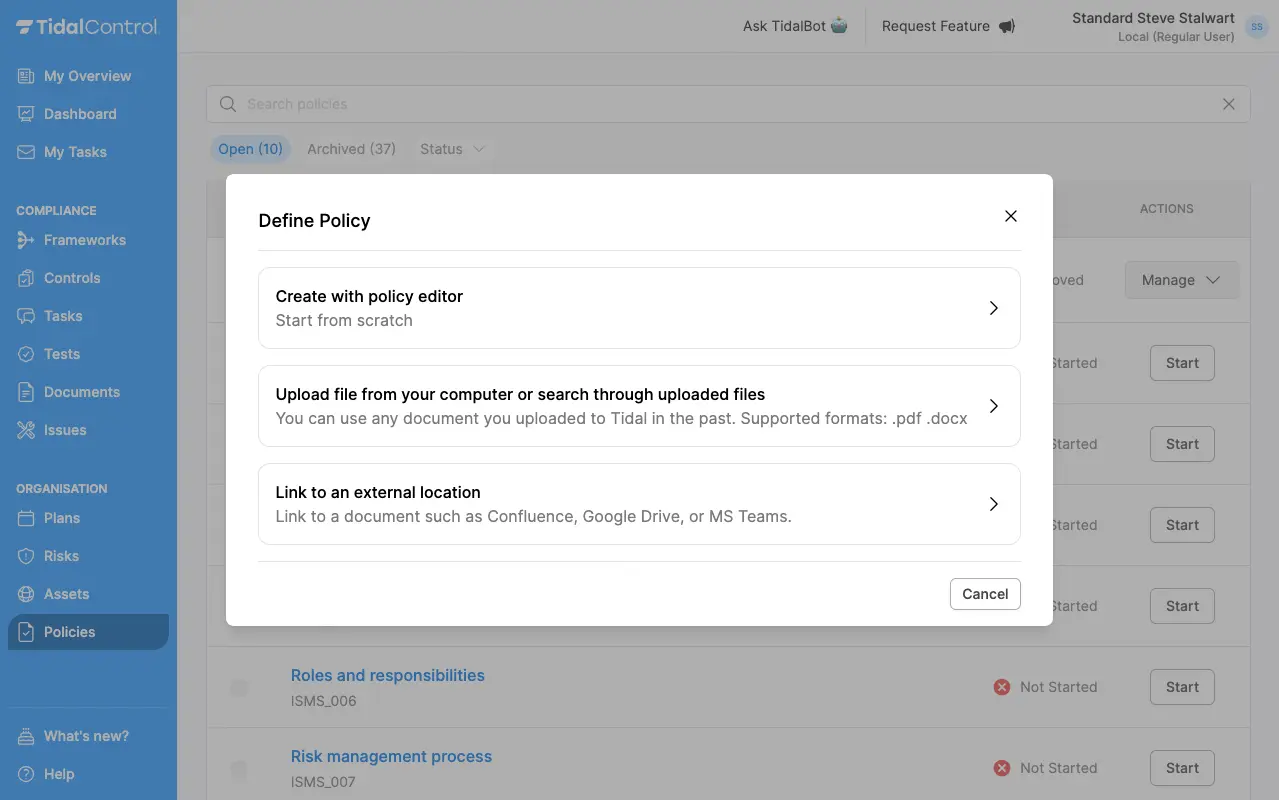
You will now navigate to the policy editor. Initially, the editor is loaded with standard template, giving you somewhere to start from. In the editor you will see:
- The title of the policy
- The status of the document, approved or draft
- Policy version number
- The content of the document
- Action buttons
- Menu button
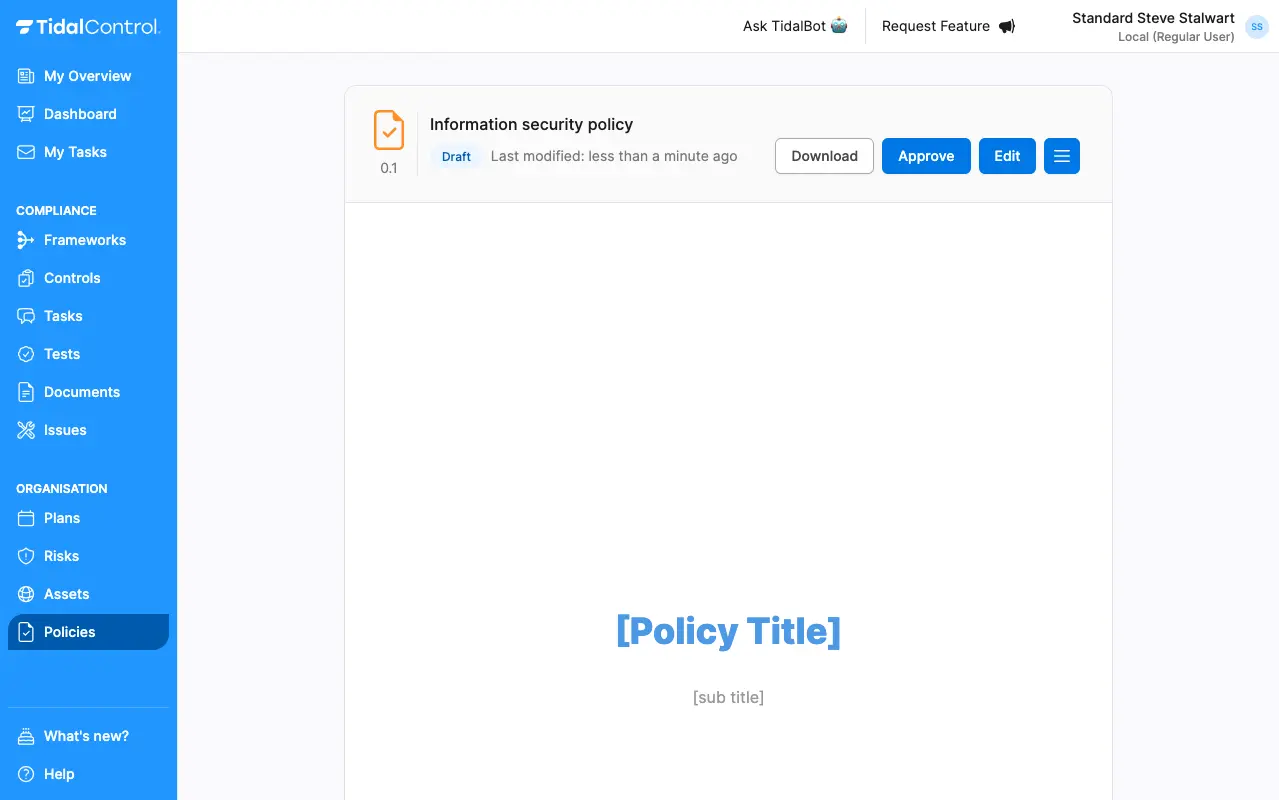
Edit your policy
When clicking the edit button, the editor tool bar appears and allows you to edit the document. The editor contains a complete feature set of document editing capabilities. Some options are not shown in the toolbar, but can be found in the menu bar.
If the current policy document is approved, it cannot be edited.
When clicking the edit button, a new draft is created with the same content as the approved policy document.
This allows you to continue working on your next policy version, without affecting the currently approved version.
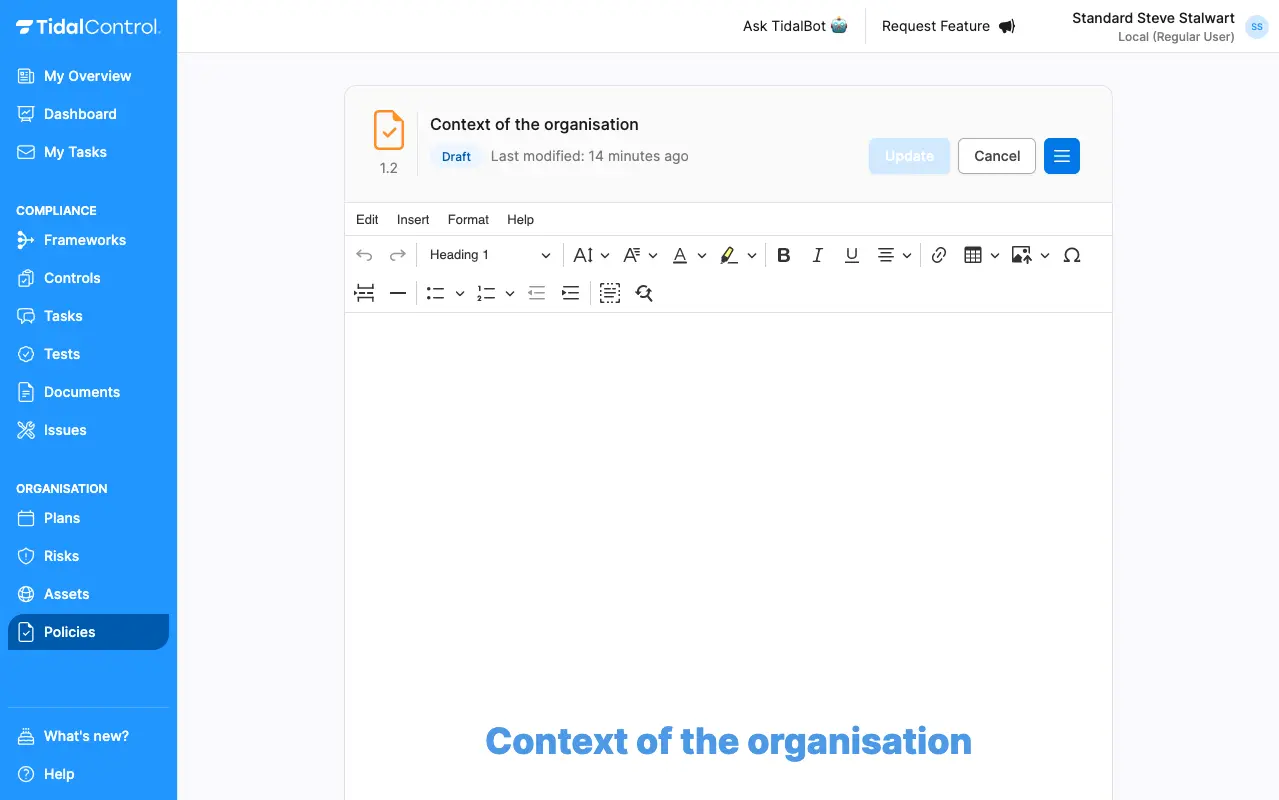
Download policy
Policy metadata
When downloading the policy, the file is exported as a pdf. To this pdf file, a header is added, which shows the information of the document at the time of export. This includes:
- The Title and version of the policy document
- The state of the policy: Draft or Approved
- The last modified or approval date
- The user who approved or modified the document
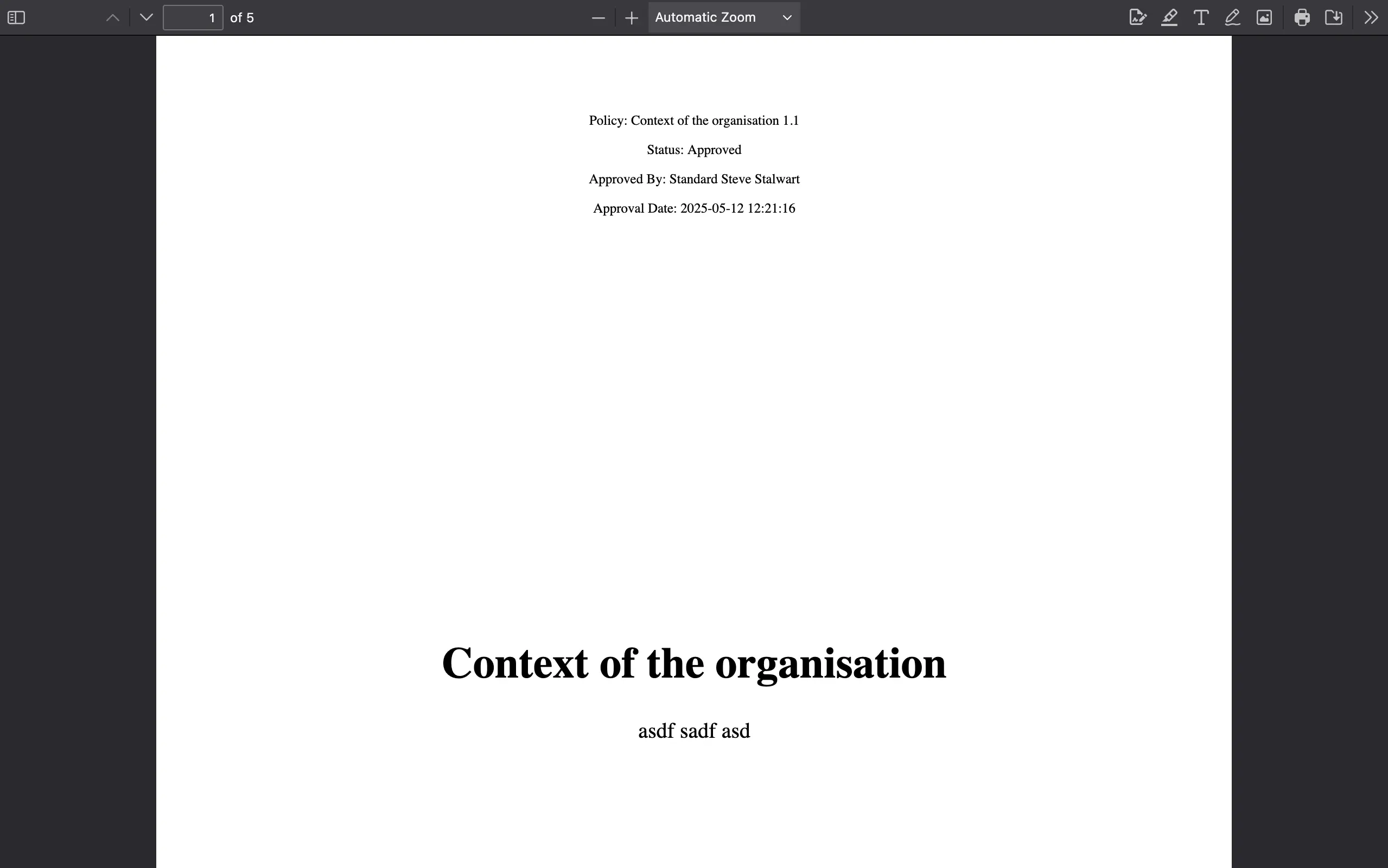
Policy version table
To keep track of all the versions of the policy, a versioning table is added as a last page to the pdf file. This is derived from the history table, which is explained further in this article. The version table shows:
- The current version
- Previous versions
- The version number
- The authors
- Approval dates
- Change comments
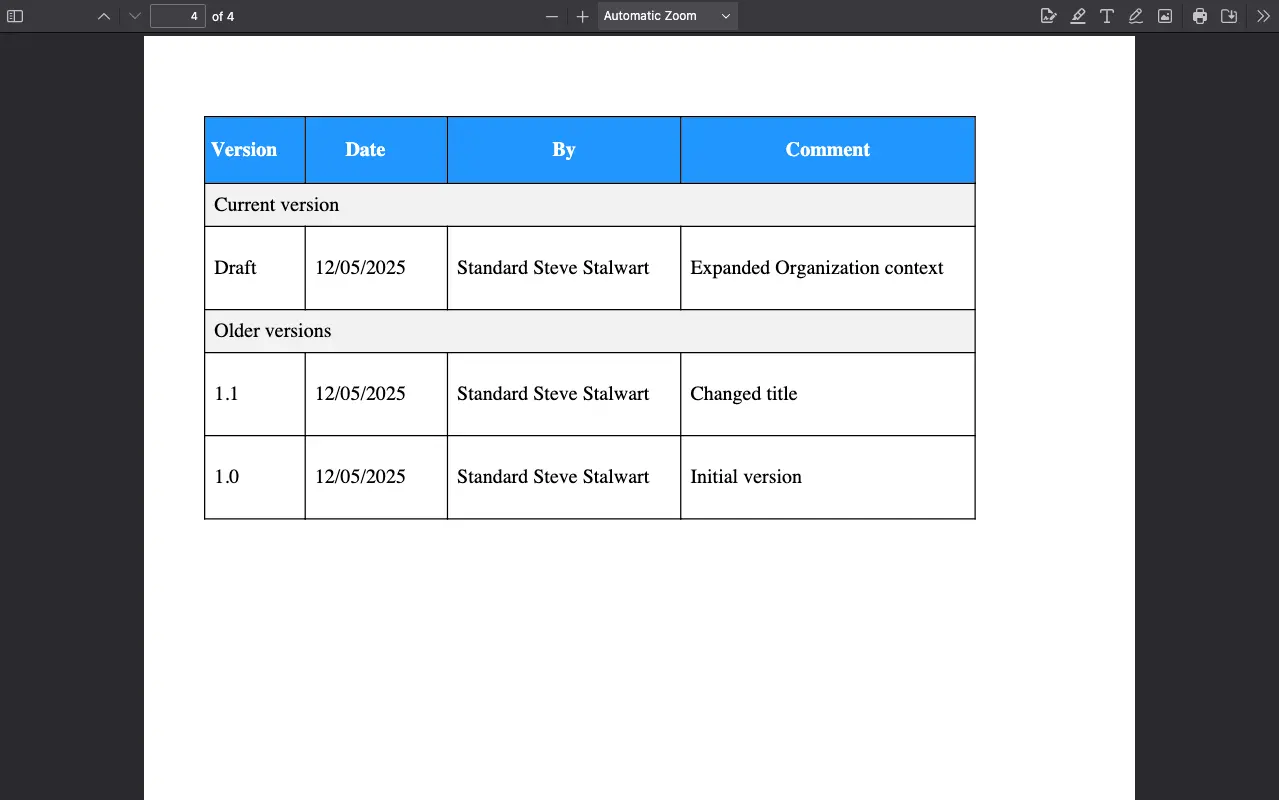
The side menu
When clicking the menu button, the side menu opens. Here we can see:
- The next review date, if the document was approved
- The framework it is linked to
- The policy ownership
- The history of the policy
- The reset policy button in the dangerzone
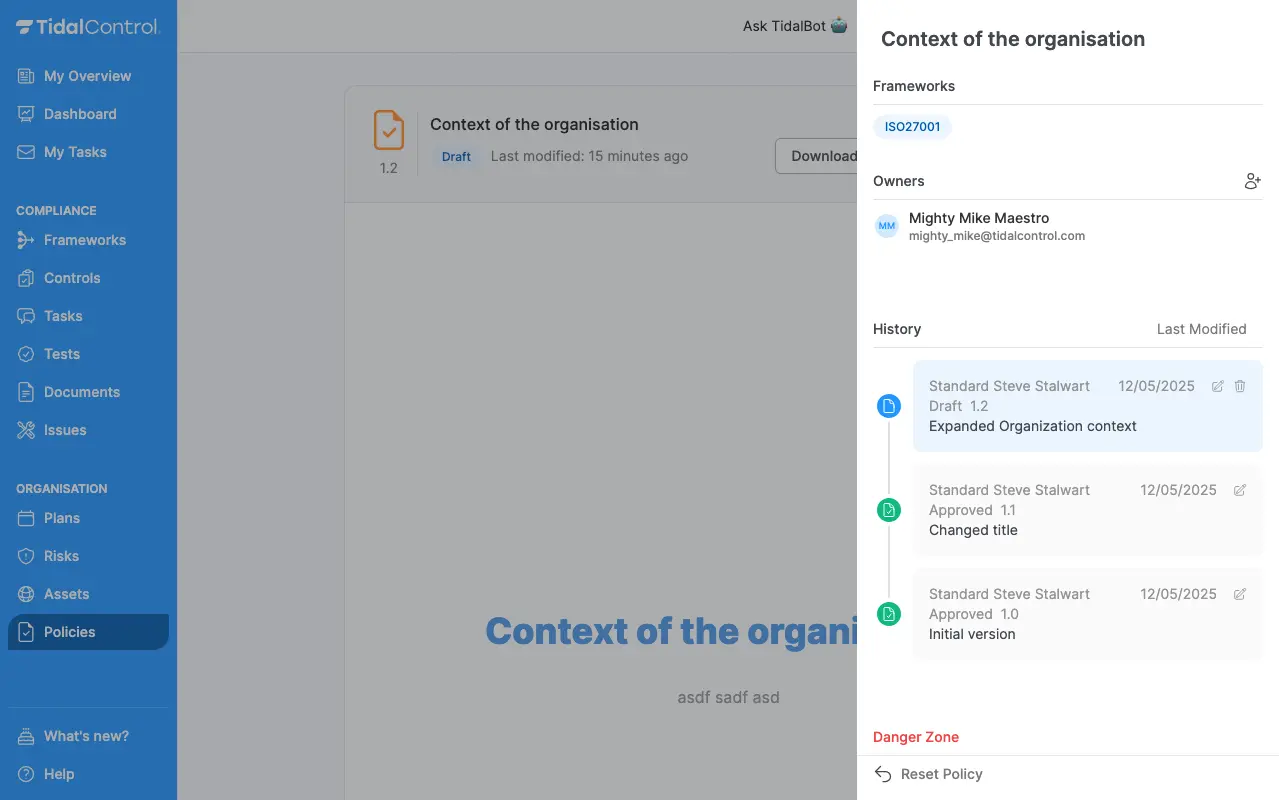
Linked frameworks
The frameworks shown here, are derived from the control, which the policy-test is linked to.
Assign an owner
In the owner section, a new or additional owner can be assigned by clicking on the user icon.
Reset policy
By clicking this button, the policy will be reset:
- Unlinking all files
- Deleting the history
- Removing the policy ownership
Policy history and navigation
Versioning
The history table shows all documents which are linked to the policy. These can be previous versions or drafts which are currently being worked on. This table functions as a changelog for the policy and shows:
- The state of the document (Draft - Approved)
- The document version number
- The change comment
- The author of the change comment
- The date at which is was last modified
Set a change comment and version
When working on a draft, you might want to keep a changelog. This can be done by clicking the pencil icon of the changelog item. This opens the changelog edit screen, which allows you to edit the comment and version number. Your name is set as the author automatically.
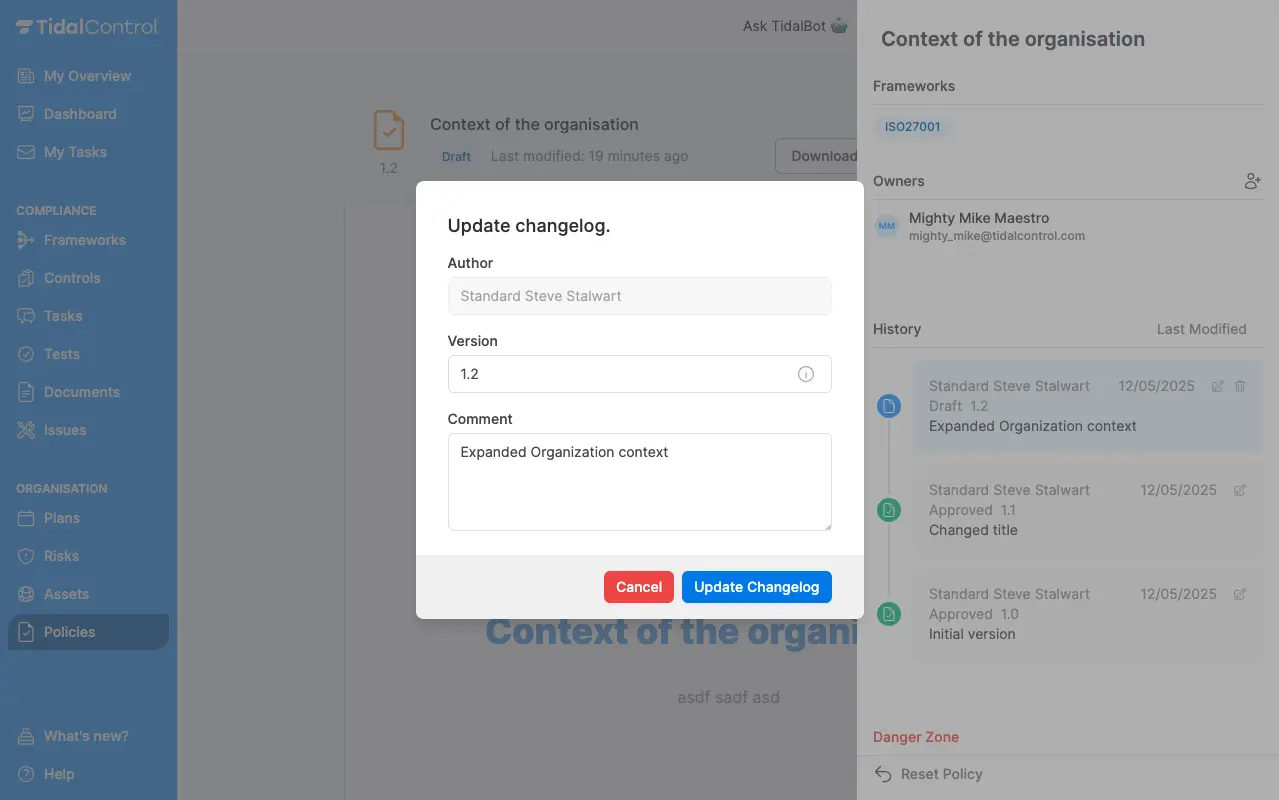
Once the draft is ready, it can be approved. When approving the draft from the action button in the editor, the changelog edit screen is shown again. This allows you to review the change comment and version before approving the policy document. The user who approves the document, is set as the final author of the changelog. Since the document can no longer be modified after approval, the approval date will also become the last modified date.

The history table shown in the side-menu, is used to create a version table, when the policy is exported to a pdf file. This table is shown on the last page of the file.
Keeping the changelog up-to-date also keeps your policy versioning up-to-date.
Navigation
The history table also serves as a navigation tool. When clicking on one of the changelog items, the editor is automatically loaded with the contents of that document. The currently loaded item is highlighted in blue in the history table.
- Previous
- Set-up policy versioning